Hello Hivers!
Have you ever seen a building that is shaped like a donut and actually sells donuts? Well, we have! There is one right here in the Los Angeles area, and it is an iconic landmark that represents what is called programmatic architecture. This is the donut shop called the Donut Hole.
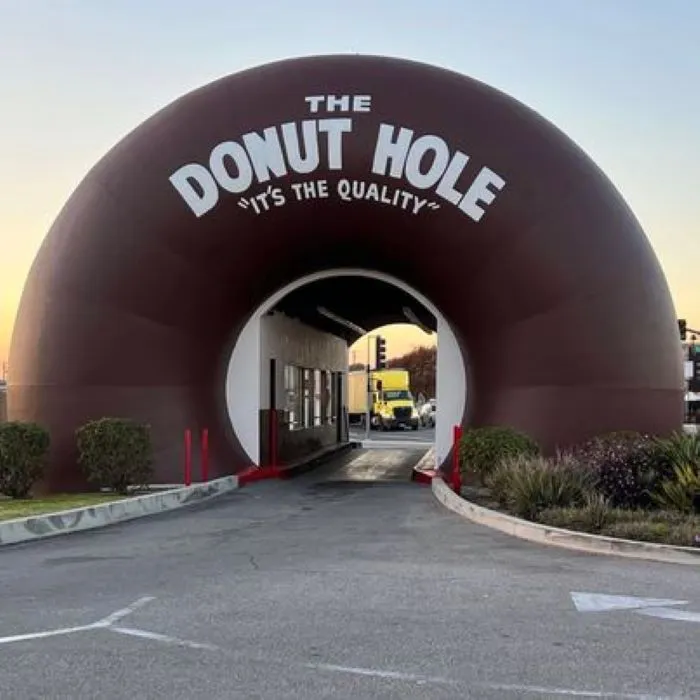
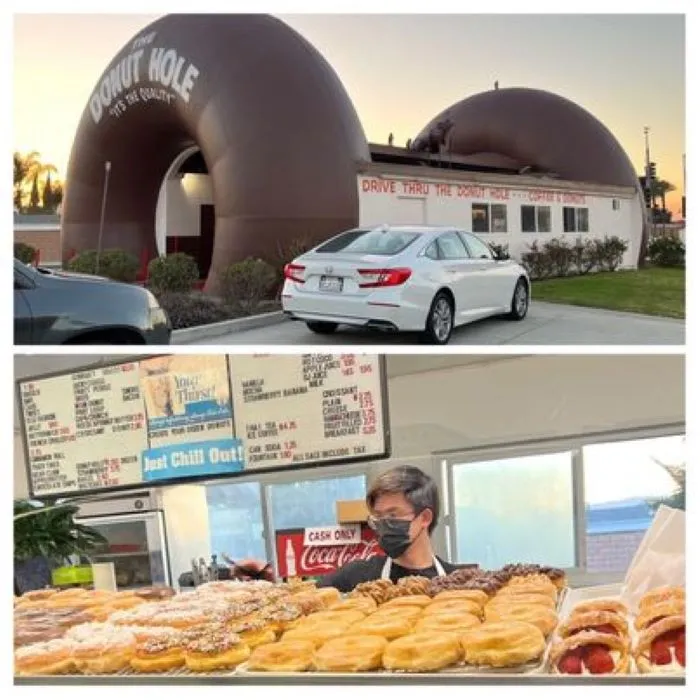
So what is programmatic architecture? It is a type of architecture where commercial buildings are designed and built in the shape of specific products for advertising purposes, an interesting way to attract the attention of shoppers. This concept was popularized in the 1920s with the advent of cars and driving customers.
Although most of the original buildings are now gone, a few structures that were inspired by this programmatic design were later built and still exist to date. A few of these are within driving distance from us so we went to check them out.
The Donut Hole
This donut shop was built as a drive-through donut store in 1968 with two half-donuts made of fiberglass and 26 feet each in diameter. It was designed by the trio of John Tindall, Ed McCreamy, and Jesse Hood. The building itself is simple -it is made of wood and stucco - and divided in the middle to make way for a driveway. It is one of five buildings constructed but is the only survivor still standing. Because of its eccentric design, it is said to be one of the most photographed donut shops in the nation. It has also been a popular backdrop for many films in movies and television. It is located in the city of La Puente.
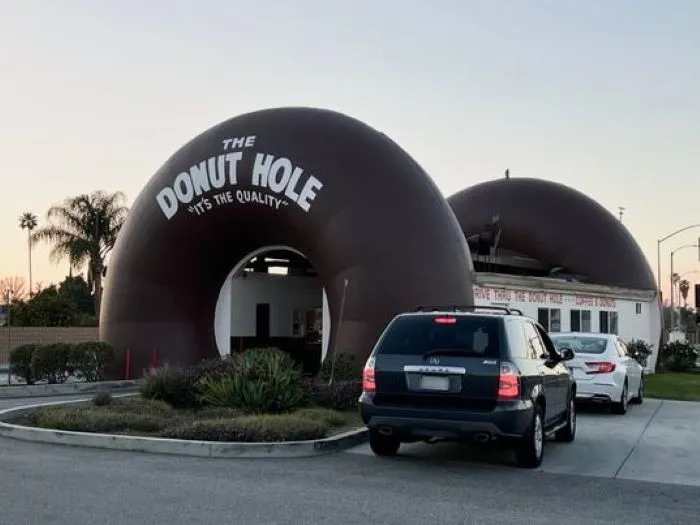
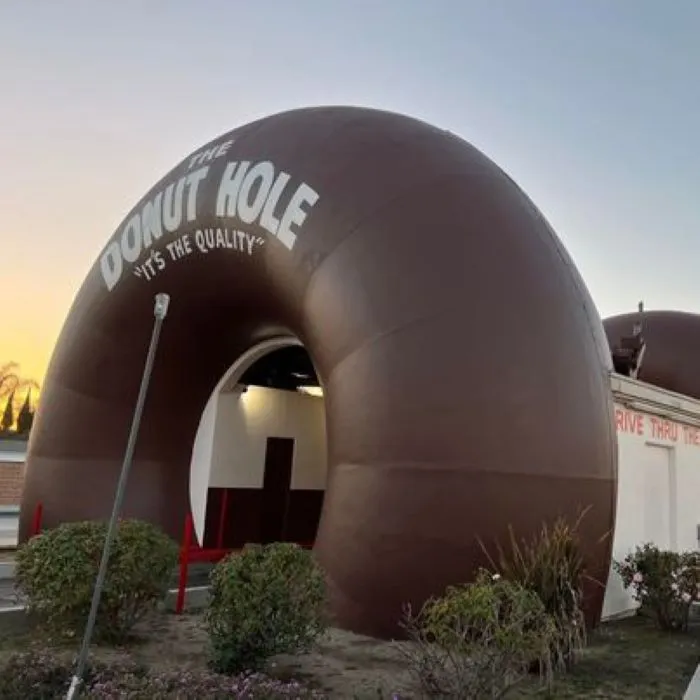
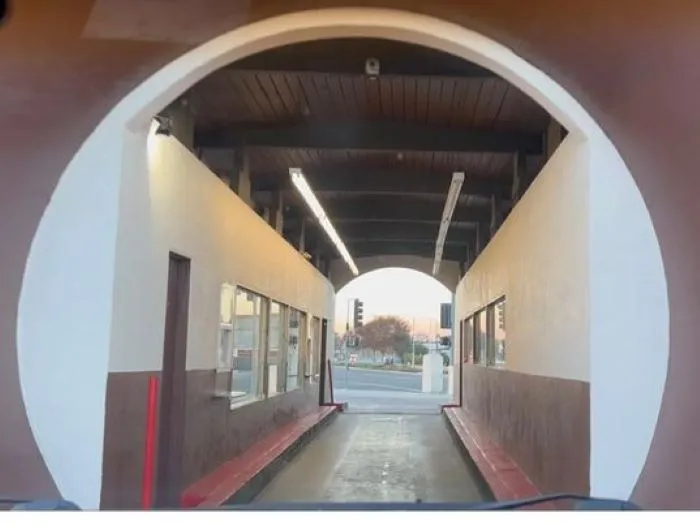
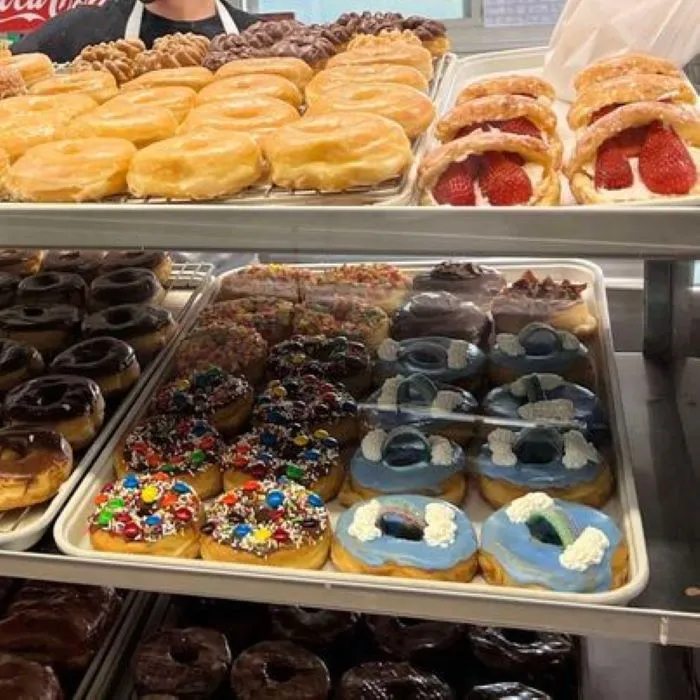
Randy’s Donuts
This is another donut shop with programmatic signage - a gigantic donut at the building’s rooftop. Built in 1953, it was designed by Henry J. Goodwill for a chain of stores in 10 different locations. It was for a business originally called Big Donut Drive-In. It changed ownership in the 1970s and was rebranded to its current name.
The giant rooftop donut was constructed of rolled steel bars and covered with gunite or sprayed concrete, a material that was used for swimming pools. The diameter of the donut in most of the shops measure 26 feet, except for the Inglewood location which is at 32 feet. Like the Donut Hole, Randy’s Donuts has been used as a location for motion pictures; the most notable ones are the Iron Man 2, Crocodile Dundee in Los Angeles and Get Shorty among others.

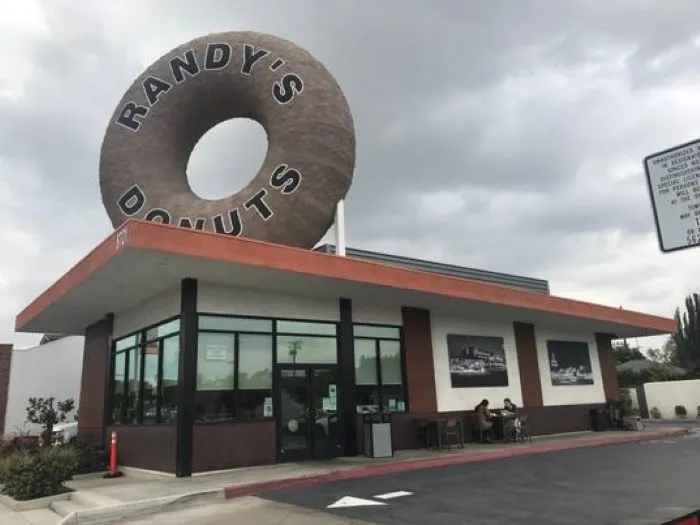
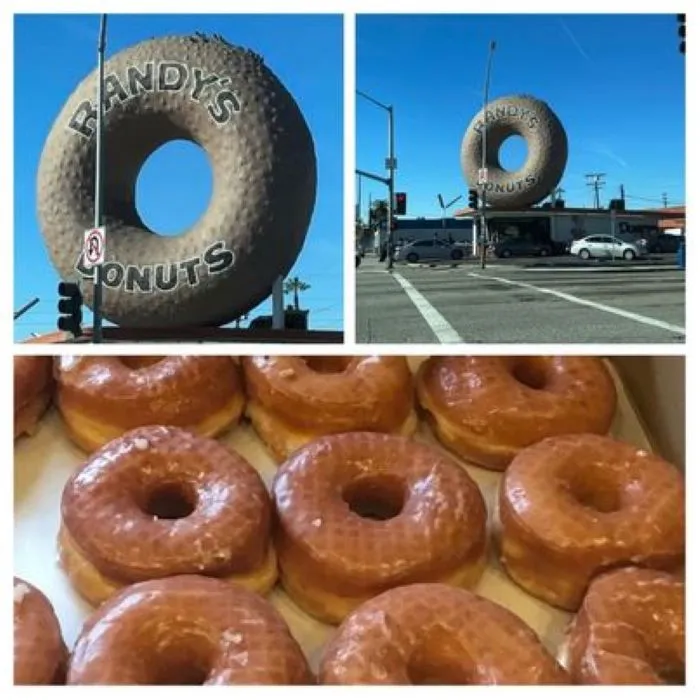
The Kettle
The Kettle was constructed in the 1970s with programmatic signage in the form of an oversized cauldron that hangs on the rooftop of the building. It is hooked to what looks like a fireplace crane. This is now a 24-hour restaurant in coastal Manhattan Beach, one of the city’s oldest diners. The black rooftop kettle is painted in the bottom with burning flames, reflective of open-hearth cooking during the American colonial period.
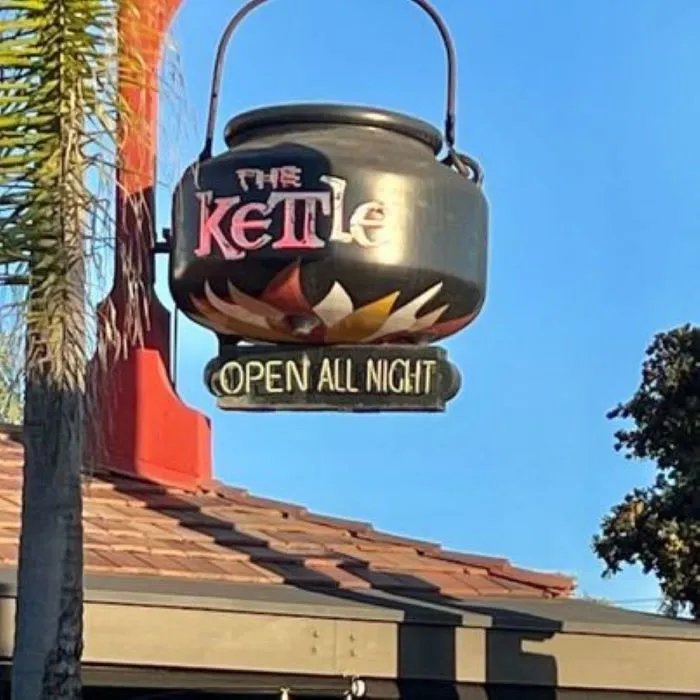
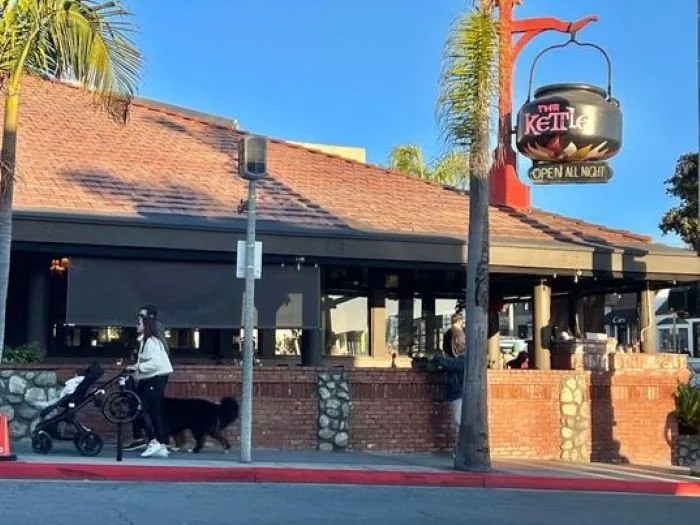

Shutter Shak
The Shutter Shak was fabricated in 1977, in the shape of an enormous old-fashioned film camera, for a business that offered fast film development - within one day. It is now a museum that houses old cameras and is open to the public once a month. It was designed and built by the wife-and-husband tandem of Susan and Michael Belmonte. The building is small - eight feet wide and 14 feet long- black and silver in color. Made of lumber and steel metal, this “1000-times-magnified “ camera is equipped with a two-and-a-half foot lens, flashcubes, and knobs. Shutter Shak’s home is in the city of Westminster.
Here are snapshots of the Shutter Shack inside the museum's fenced-off yard
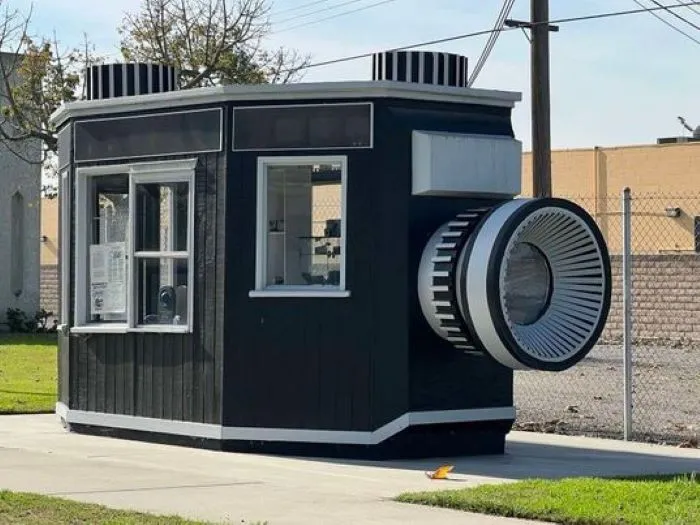
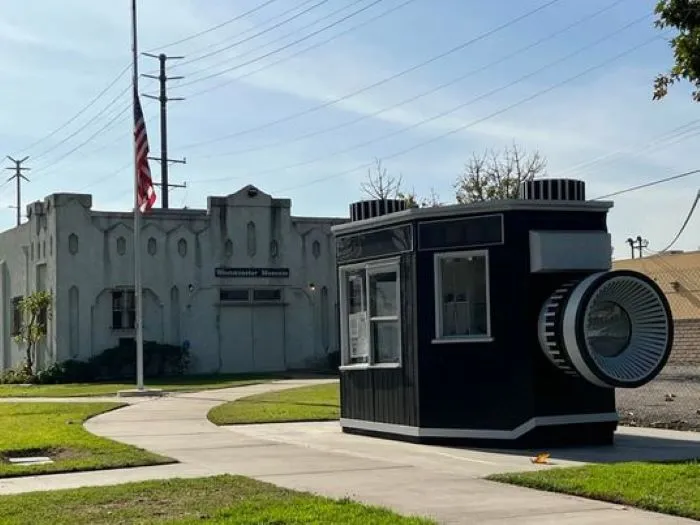

So there, dear Hivers, a glimpse into the strange, if not amusing architecture around us. Happy reading. Till next...